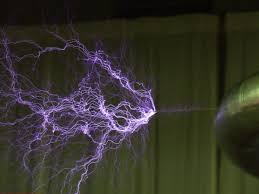
The use of higher voltages introduces a number of new aspects that have to be taken into
account in order to prevent current leakage or flashover due to inadequate insulation. In
general all metals are conductors of electricity due to their higher conductivities, with
copper and aluminium being the cost-effective choices. Non-metals are generally non-
conductors of electricity, i.e. insulating materials. These include gases in their non-ionized
state – air at atmospheric pressure being the most generally applied substance of this
type. Pure, deionised water is also an insulating material, but minute quantities of
dissolved inorganic salts turn it into a conductor, despite the fact that the salt crystals are
insulators when dehydrated. Organic matter, such as wood, is also a good insulator when
dry, but becomes conducting when moist
- المعلم: khechkouche ali
 the growing interest in electric motors is justified by the need for variable speed industrial processes. The development of power electronics components and control techniques has increased interest in electric motor drives.
the growing interest in electric motors is justified by the need for variable speed industrial processes. The development of power electronics components and control techniques has increased interest in electric motor drives.- المعلم: lammouchi zakaria
